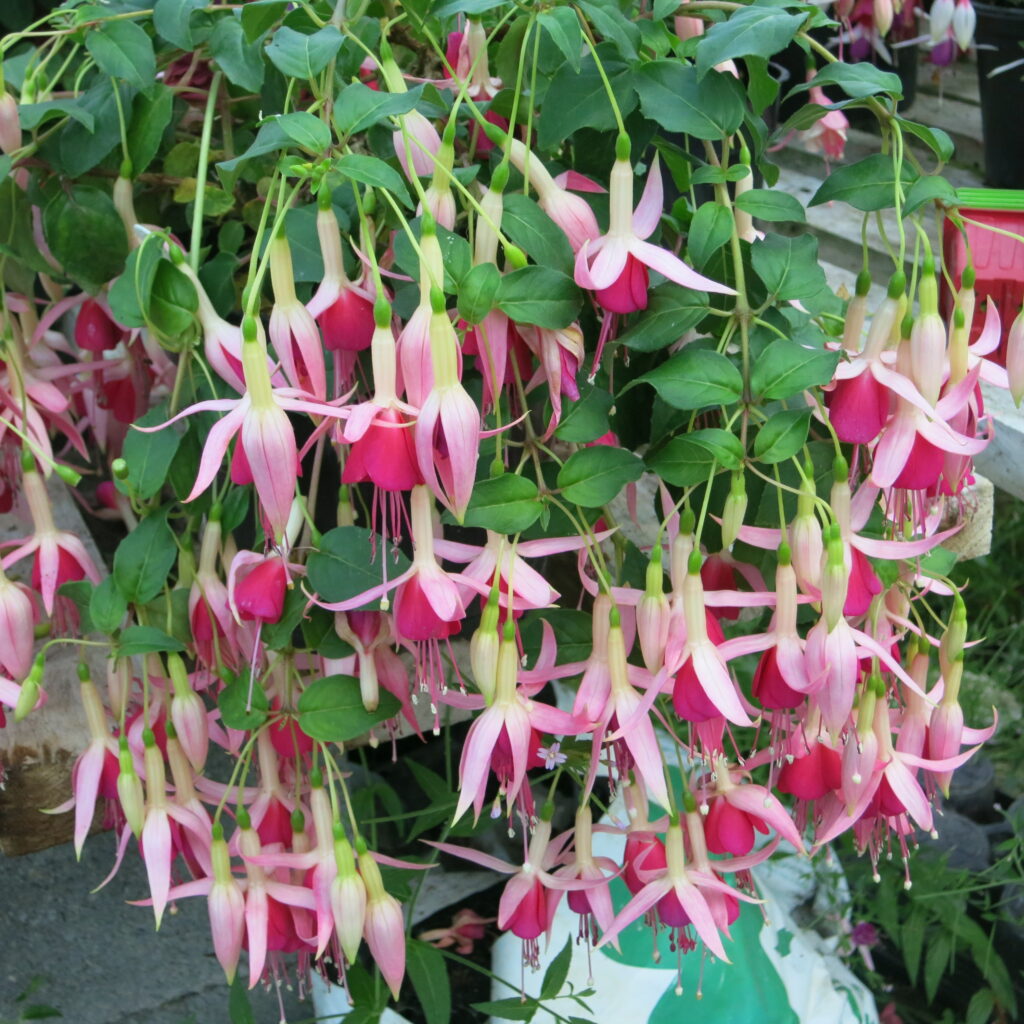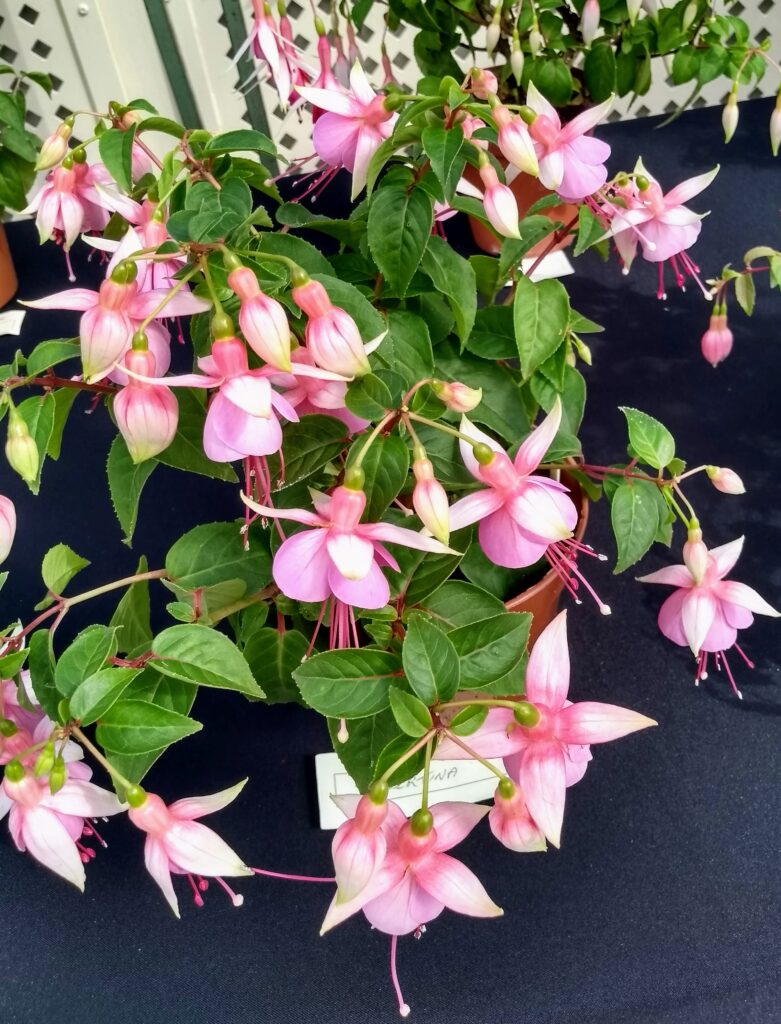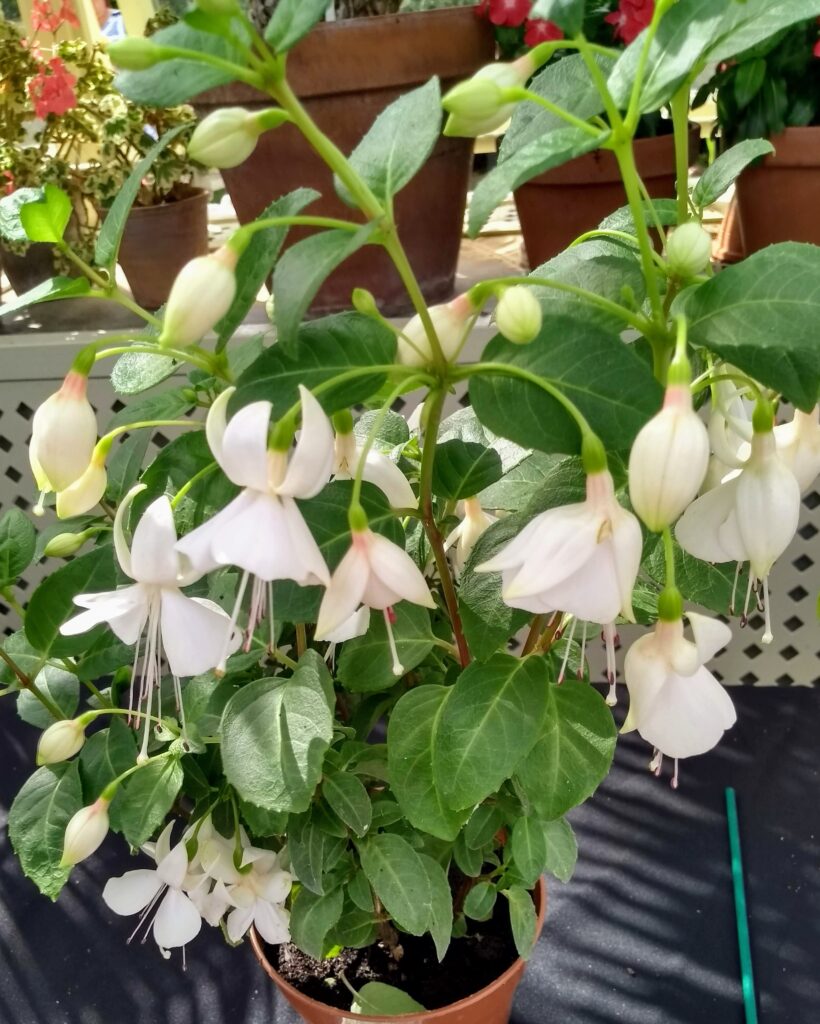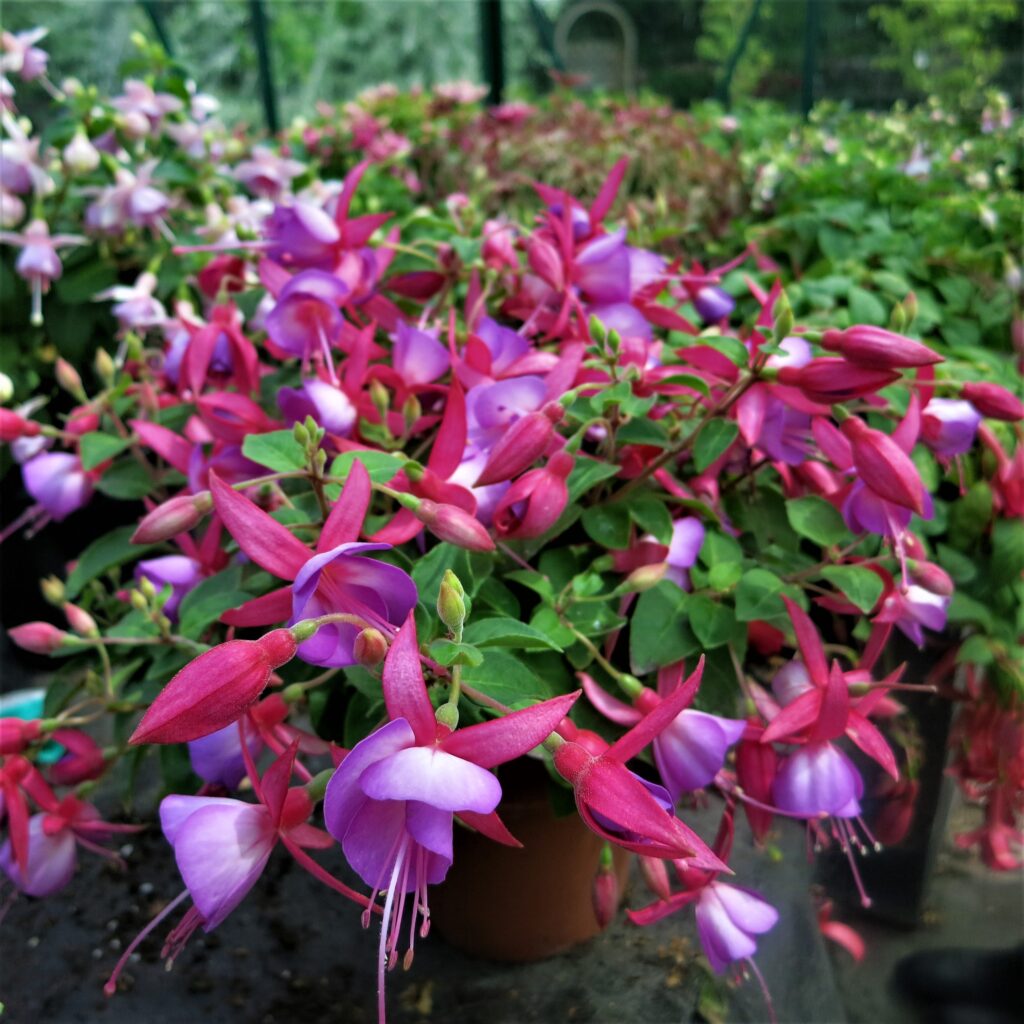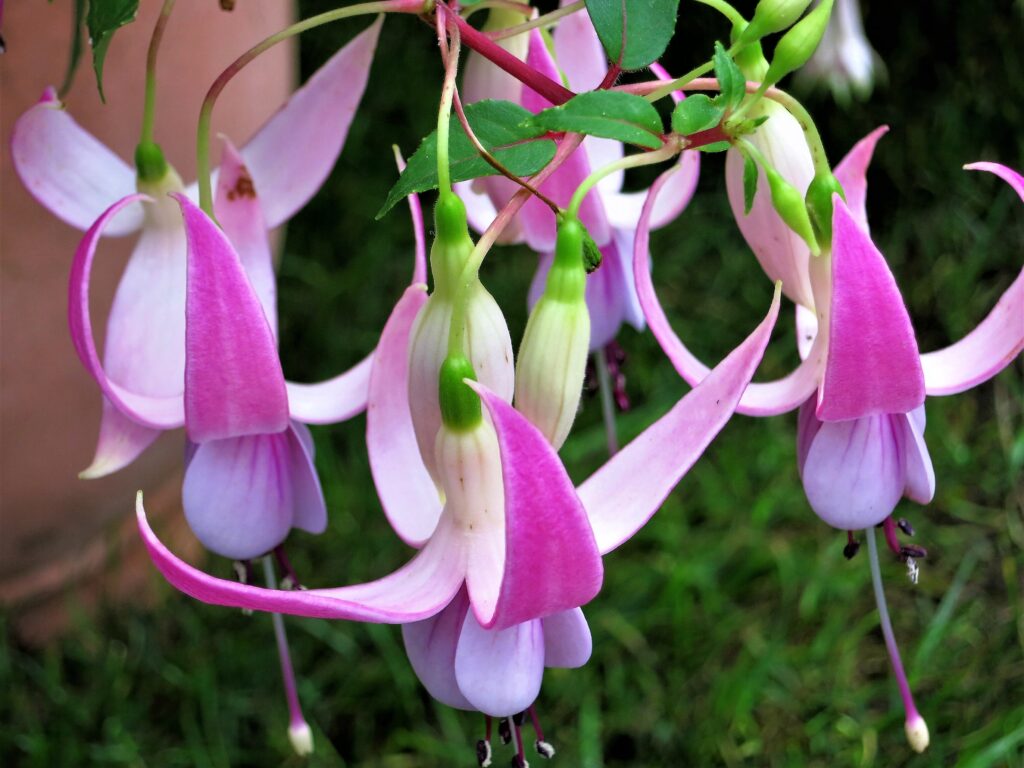Chapter 2 What is a fuchsia?
Fuchsia triphylla coccinea , the first recorded fuchsia, was found by Fr. Plumier in the Dominican Republic and grows in a warm climate.
Triphylla refers to the fact that the leaves grow in groups of three on the stem, most other fuchsias carry leaves in sets of two. Coccinea refers to the colour, the flowers were all red, and they grow in long, elegant clusters at the ends of the stems. Similar varieties are all termed ‘triphyllas’ or ‘triphylla type’.
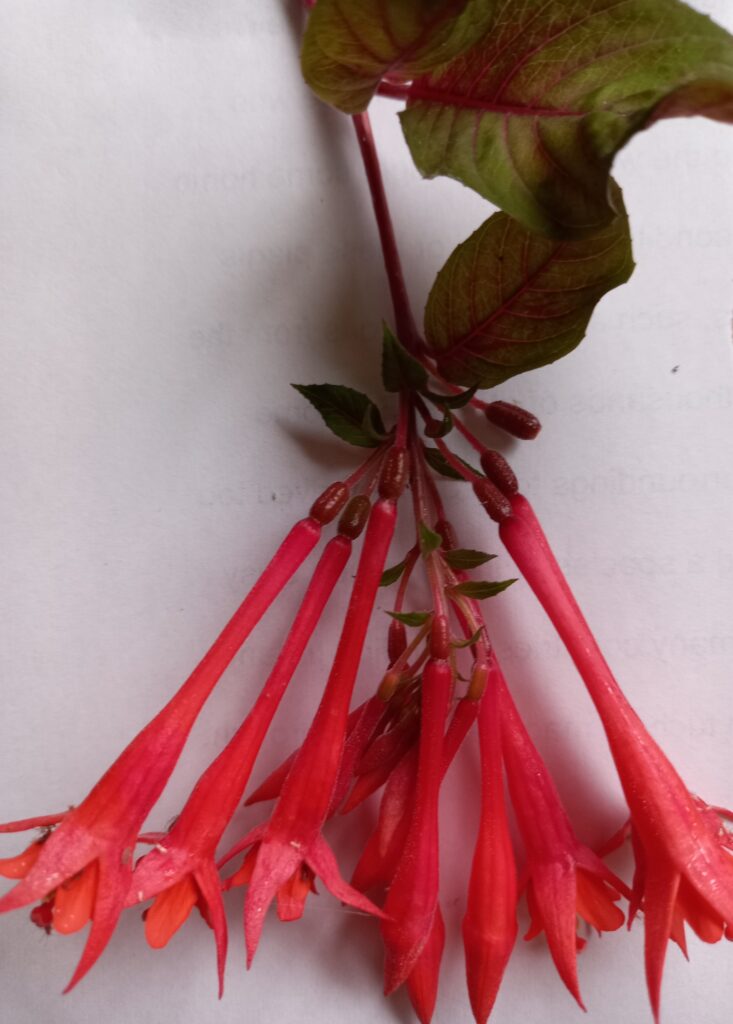
Fuchsia boliviana is found in areas of Spouth America in Peru, Bolivia and some other areas of South America. The flowers grow in clusters, similar to F. triphylla, but larger, and bunches of edible berries form when the flowers have fallen. These berries formed part of the diet of the people in these regions.


Fuchsia magellanica
F. magellanica, the fuchsia we are so lucky to have growing wild in Ireland, originated along the coast of Peru, in cool climates, as far south as the Straits of Magellan, from where they got their name. There are many varieties some with red/purple flowers, others with white flowers. Most have plain green leaves but some can have golden, versicolor or variegated leaves.

Fuchsia magellanica alba

Fuchsia microphylla
F. microphylla from Mexico is very small-growing bush with tiny flowers in shades of red, pink and white. These can be very hardy and some flower all year round.

These are just some of the beautiful varieties of fuchsias that are found around the world. Over the years, growers have crossed the pollen from these different species and developed new varieties. The original colours were red, and red and purple, but their first breakthrough came when they discovered a fuchsia with white petals. Then red and white fuchsias were produced. Later, some double varieties appeared and this began the race to produce larger blooms, with shades of blue, pink and orange. We have already discussed F. magellanica, with simple single flowers, but is still very beautiful. Many people prefer the new varieties with large, double, blousy flowers, with the result that hundreds of new varieties appear each year.
Fuchsias flowers are extremely beautiful and are often described as resembling ballerinas, wearing frilly tutus. As stated previously, we are lucky to have a relatively mild climate in Ireland, especially near the coast, with the result that some fuchsias overwinter well. As well as all the magellanica and microphylla types, here are some fuchsias we can include in the hardy category.
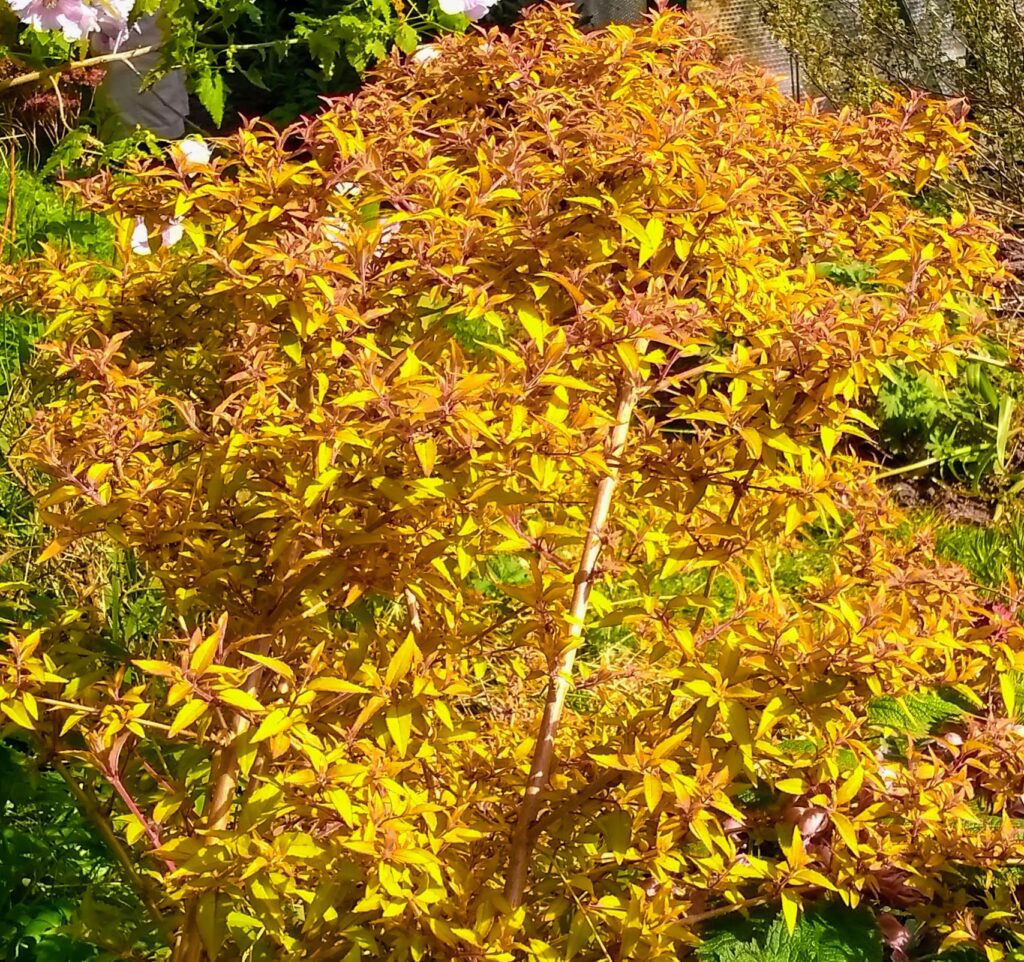


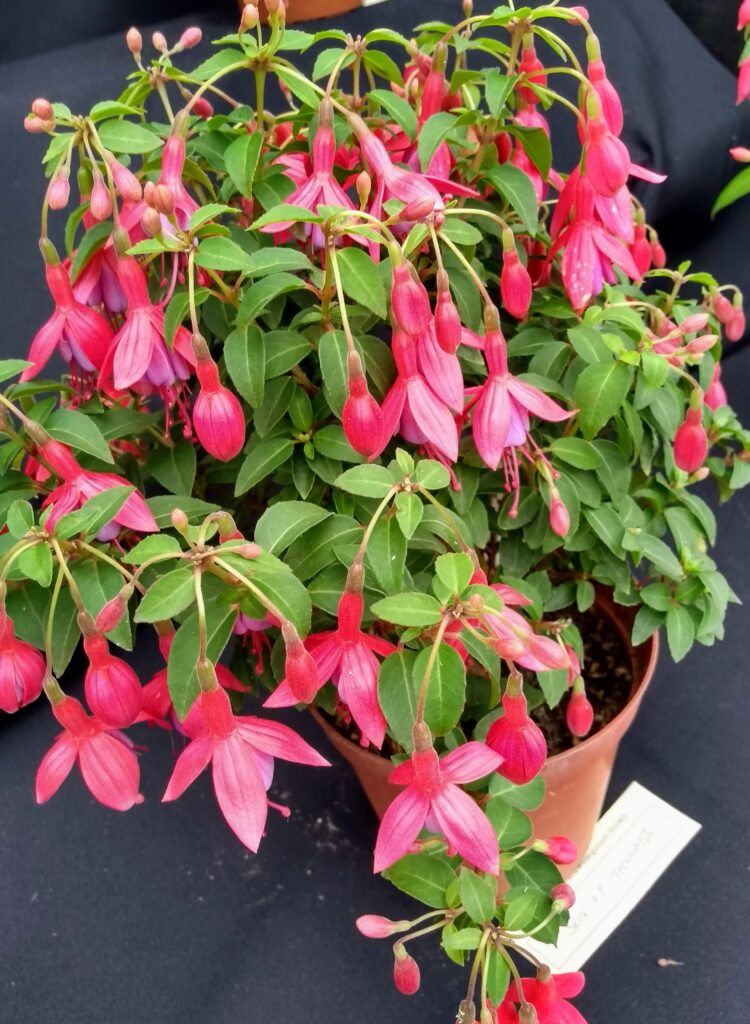
Many varieties are in the tender category, and need some winter protection, even in Ireland. They will survive in a winter temperature of between 5 and 7 degrees C but some at temperatures lower than that. Most of mine will survive in an unheated greenhouse, covered with one or two layers of horticultural fleece. Sadly, some of our most beautiful fuchsias are in this category.

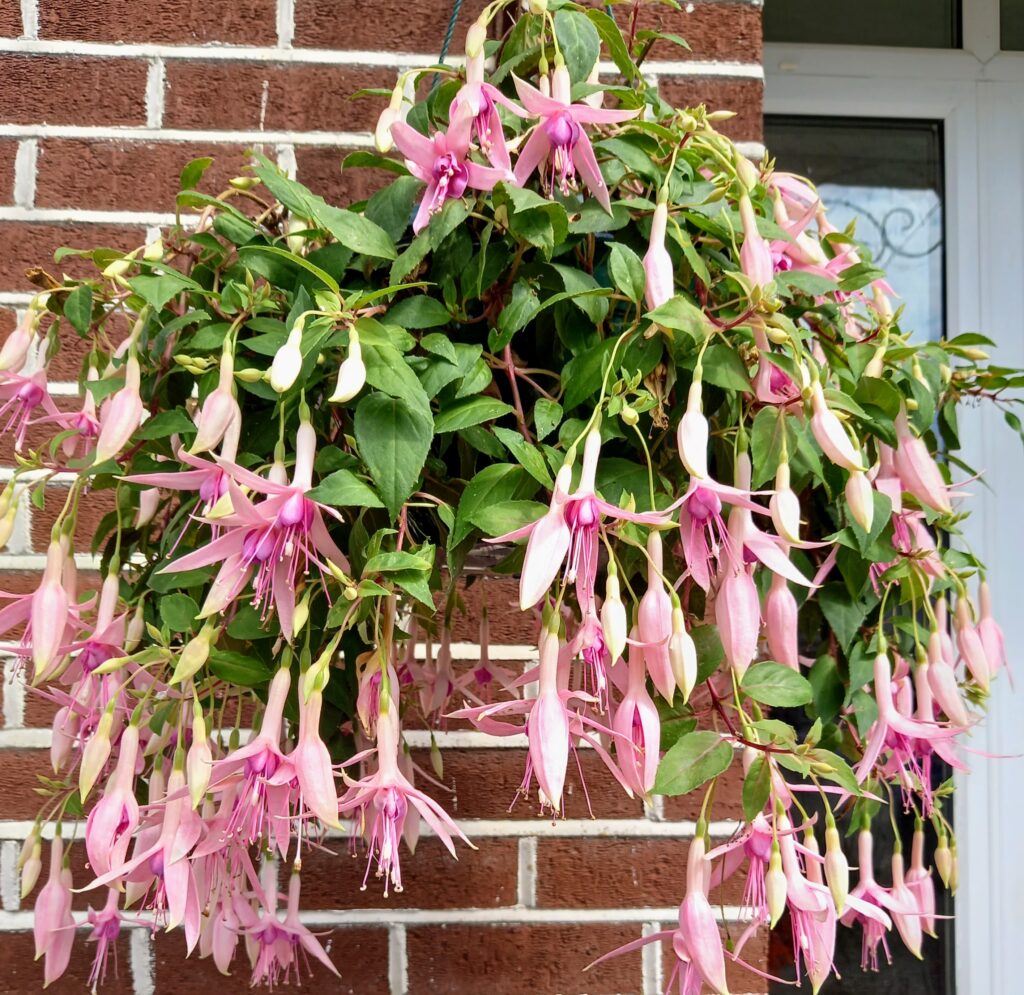


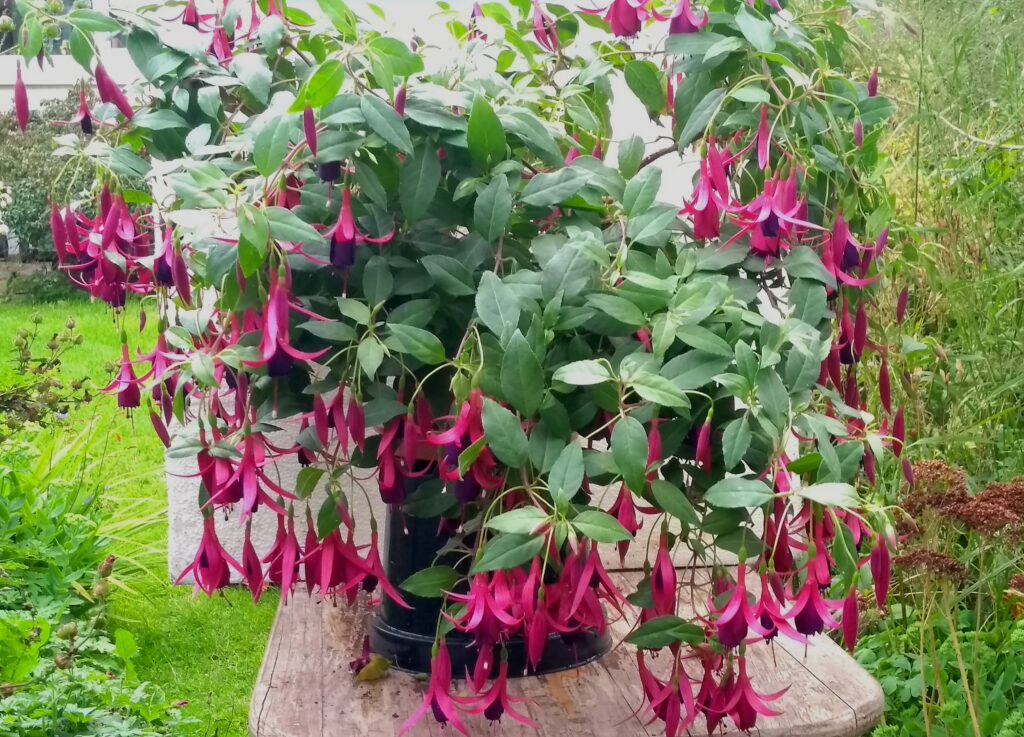
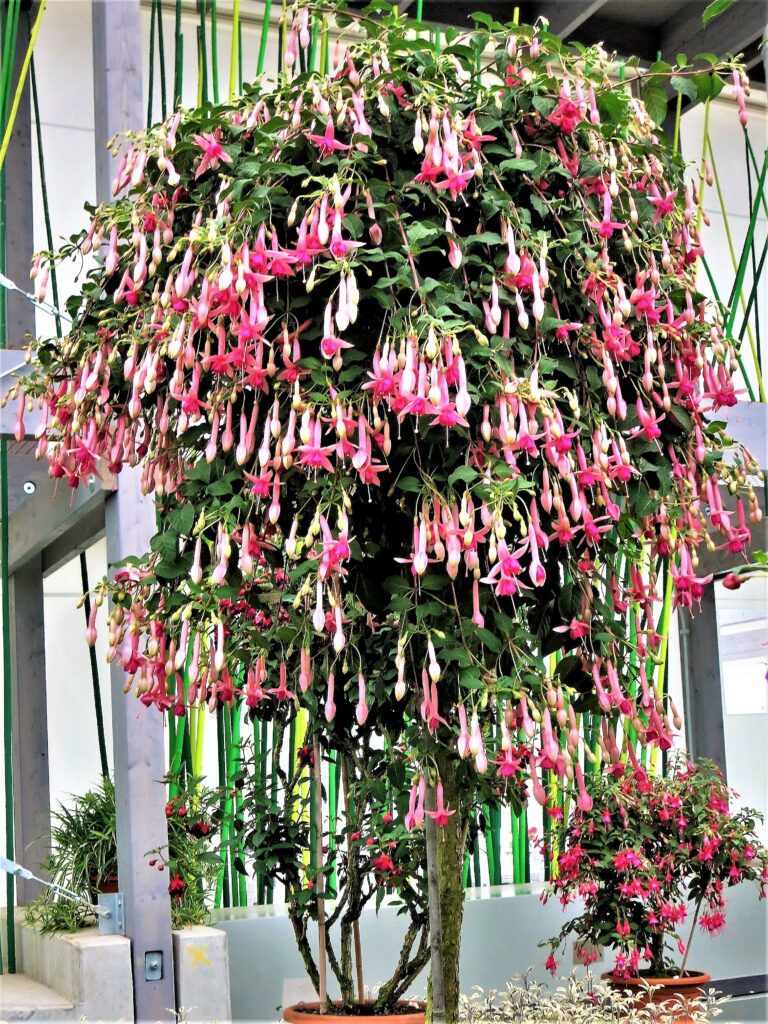


The following fuchsias are very versatile and, according to your choice, can be grown as bush, standard or trailing plant. All trailing fuchsias can be planted in hanging pots, three per pot or in a hanging basket, three, five or seven to a basket depending on the size of the basket’
